
This year in most of the USA, there will be no trick-or-treating door to door, due to COVID19.
As October 31 approaches, we have two suggestions: stage a “treasure hunt” , with scary clues, around the house and yard, where kiddos can find stashes of Halloween candy, along with non-sugary Halloween treats like games, stickers, puzzles, stuffed toys, washable tattoos, glow-in-the-dark trinkets and other scary-fun stuff.
Send or drop off a “care package” containing the same items to families you’d normally see trick-or-treating.
Then you can all do the treasure hunt in real time, captured on your cell-phone!
And don’t forget the full-costume Zoom party, where everyone gets to play games and share ghost-stories!
But our best idea is that you need a treat during quarantine, too.
Especially if you’re home-schooling and entertaining little ones with cabin fever, you may need something to lift your own “spirits.”
The Magic of the Season
When we slip on a fine Ruby ring or a collar of Topaz gemstones, it's impossible not to feel a little shiver of recognition -- a brush with something much bigger than ourselves.
From a purely scientific point of view, of course it's true: gemstones formed millions of years ago when the planet was young, the result of unimaginable cosmic forces, heat, fire, cold, pressure and chemical interactions deep below the earth's surface.
In this sense, gemstones and all minerals are a link with a distant past that predates the evolution of human beings by many lifetimes.
The earliest written records of civilizations around the world describe how people of every century, on ever continent, intuitively felt what they believed was the animated energy of gemstones. Gems of all types have been used in every culture for protection, healing, and for predicting the future.
Today, New Age practitioners and many others explore this lost connection by using gems in spiritual practice. In fact, this attitude has never really left human consciousness, although the rise of science challenges these belief systems.
In medieval Europe, these practices persisted even among devoted Christians. The point in the calendar year at which we find ourselves right now -- poised between the Autumnal Equinox (September) and the coming Winter Solstice (December) -- has been considered the time of year when gemstones and their magic are at their most potent.
Cultures as diverse as the Celts of the British Isles and the Maya, Aztec and Olmec of the New World both describe this period between major astronomical shifts as the space in the solar year where the boundaries between everyday human life and other realms, including the land of departed souls, become permeable. This was believed to be a temporary condition, one where a person could more easily contact and visit the dead. And gemstones and their presumed powers were always part of that perilous journey between worlds.
Throughout Europe, these beliefs created the template for the current holidays of Halloween, All Soul's Day, and Day of the Dead. Later Christian practice attempted to mask -- more about masks in a moment -- these pagan roots, but there's no denying that the origins of these holidays thread back many millennia.
Whispers of the past are with us still. In Ireland, for example, this time of year is known as a "thin place", a point in the year when the barriers between the known world and the unseen become thin enough to pass through, especially if one receives assistance from a spiritual guide.
Here's where we find the origins of our current Halloween celebration, for example. Pagan belief held that during this time of year, humans could enter the underworld to resolve unfinished business with departed loved ones, family, and even settle old scores with former enemies.
There was danger involved. Often, the dead on "the other side" were unquiet, meaning that they missed human company. It was widely believed that this would be the case if the individual perished without saying proper goodbyes and receiving appropriates rites of passage into the next world, including a proper burial.
So when a human entered the realm of the dead, there was risk: the dead may try to persuade the living person to stay with them. In fact, this is how the tradition of Halloween masking and sweets began. A traveller into the underworld would typically disguise their appearance, and bring treats as a distraction for the needy departed, in order to move easily in and out of their shadowy realm.
Preparation for this journey into the thin places required protection, supplied by a metaphysical practitioner who would today simply be called a witch. It's worth noting that while today's Halloween decorations portray witches as old and ugly, this is a Puritanical interpretation.
From the classical periods of Greece and Egypt forward, witches were often described as young, alluring, and deadly. For instance, Circe, the witch in Homer's Odyssey, drove the hero and his men to madness with her beauty.
The general idea was that witches were ancient, immortal souls who could shape-shift at will, able to change form, gender, age, and easily morph into a wolf, an eagle or a honeybee, whatever the situation demanded. Witches are, after all, practitioners of magic!
Witches often prescribed gemstones as medicine, similar to the way they used herbal remedies. These traditions persisted in Christian Europe well into the Renaissance, defying Scripture but so deeply embedded in culture that their traces remain even today.
Two historic documents are good examples: the "Liber Lapidum," written in the 11th century C.E. by none other than the Marbodas, Bishop of Rheims, and the later "Book of Minerals" by Albert Magnus in 1260 C.E.
Scorned by the church fathers, these volumes assigned myriad powers to gems, and are a valuable insight into centuries of European belief-systems.
These powers included protection against assaults by ghosts, nightmares, poisoning and wild beasts, a cure for insanity, and a way to prevent quarrels.
A "weird woman" as they were called then (in early England, "weird" simply meant one gifted with the powers of sorcery) would procure gems specific to the needs of an individual who sought out her assistance. Given this history, it is entirely possible that witches were among the first gemstone traders and merchants!
The following gemstones might have been prescribed as follows:
Amethyst: Protection during travel, prevention of drunkeness and overeating.
Emerald: Fertility, improving eyesight, curing insomnia, enhancing psychic powers. Also believed to cure the "falling sickness" (epilepsy) and "tertian fever" or "Emitreteus" (malaria), as well as the ability to prevent storms!
The latter was especially important when planning a military action, which contributed to the value of Emeralds among Europe's leaders, who wore these gems and had them set into armour and weapons.
Garnet: Devotion of all kinds, and prosperity in business.
Peridot: Cures jealousy -- reference the color green being associated with jealousy in the writings of Shakespeare, for example. In "Romeo and Juliet", the moon turns green with jealousy upon observing Juliet's beauty, and in "Macbeth", the "green-eyed monster" leads to tragedy, treachery and betrayal.
Ruby: Worn to strengthen and deepen love. Also believed to assist in blood-clotting needed for recovery from wounds. Recommended for women at childbirth, and for warriors and soldiers.
Sapphire: Perhaps the most sought-out gem, used in royal and ecclesiastical jewelry. For common people, the gem was often tucked under a bed-pillow at night to bestow its powers during sleep. Sapphires were believed to prevent broken bones, as well as protecting the owner from being cheated in business.
Sapphires were used to facilitate the release of captives from prison, as well as being a cure for ulcers, headaches, poor vision, sweating, excessive "internal heat" (infection and inflammation, including gout), and stammering and stuttering.
Sapphires were also used by pagan practitioners for hydromancy, meaning the tradition of foretelling the future by reading the motion of water, including observing the ripples created by tossing pebbles into a stream or pond to contact water-spirits and receive their messages. The mystical Arthurian legend of the Lady of the Lake is a persistent reminder of this ancient cultural practice.
Topaz: The Tuscan poet Francesco da Barberino wrote in 1318-20 C.E."...that maidens should wear Topaz before marriage to help them preserve their chastity, for it checks the forces of their carnal desires."
Topaz was also recommended for calming a bad temper, and to prevent mood-swings and worry.
Tourmaline: For easing loss and grief.
Why this Halloween is Different
Well, we’ve already covered the obvious! We’re not free to play, party and mingle. In fact, your life may feel a bit like a Halloween escape room with no key!
We find that a gorgeous gem makes EVERYTHING better.
Will a precious gemstone prevent broken bones, or a terrible storm at sea, or release prisoners, or cure insanity?
We're curious; please let us know.
One thing's for sure: a gorgeous gemstone brings sparkle to every day, especially this time of year as the sun disappears and the days grow colder, shorter and shorter, culminating right before the Winter Solstice.
More than Harvest colors of Orange, Gold and Black: Blue, too!
What's unique about this Halloween is the color blue. Why? Because the full moon of October 31, 2020, will be a rare “blue” moon.
A blue moon may or may not appear blue in color. But is always rare. A blue moon is an additional full moon that appears within a given cycle, such as the second full moon in the month of October.
The next Halloween blue moon is not expected to occur until the year 2039, according to AccuWeather meterologist Brian Lada, so this one is worth celebrating!
CHECK OUT OUR BLUES VOCABULARY

Natural Unheated Blue Sapphire Octagonal Shape, 3.58 carats. A truly heavenly stone with GIA Report


CHECK OUT OUR AUTUMNAL CORNUCOPIA
The traditional color for Halloween is, of course, pumpkin orange.

Check out our 14.64 carat Hessonite Garnet. It glows like a Jack-o-Lantern!
We call this one “Cinnamon Girl”, with hints of turmeric and saffron in a glamorously large size.


If you love the autumnal palette, you’ll also be “haunted” by our new selection of Andalusite and Oregon Sunstone, which are cut to reveal their rather sultry spectrum of smoky greens, bronzes, burnt oranges, ripe gold and mossy-green tones.

Call us now to consult for all of your color gem needs!

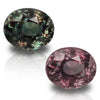 Alexandrite
Alexandrite Amethyst
Amethyst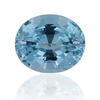 Aquamarine
Aquamarine Chrysoberyl
Chrysoberyl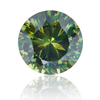 Demantoid
Demantoid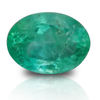 Emerald
Emerald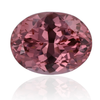 Garnet
Garnet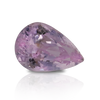 Kunzite
Kunzite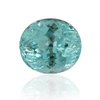 Paraiba
Paraiba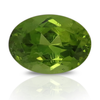 Peridot
Peridot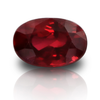 Ruby
Ruby Sapphire
Sapphire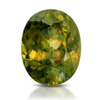 Sphene
Sphene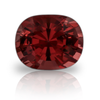 Spinel
Spinel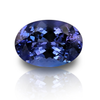 Tanzanite
Tanzanite Topaz
Topaz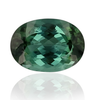 Tourmaline
Tourmaline Zircon
Zircon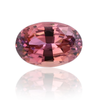 Zoisite
Zoisite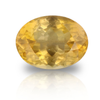 Rare Gemstones
Rare Gemstones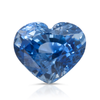 Heart Shape
Heart Shape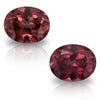 Matched Duo
Matched Duo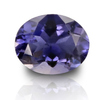 Everyday Candy
Everyday Candy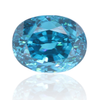 Insta Therapy
Insta Therapy Mini-Splurge
Mini-Splurge